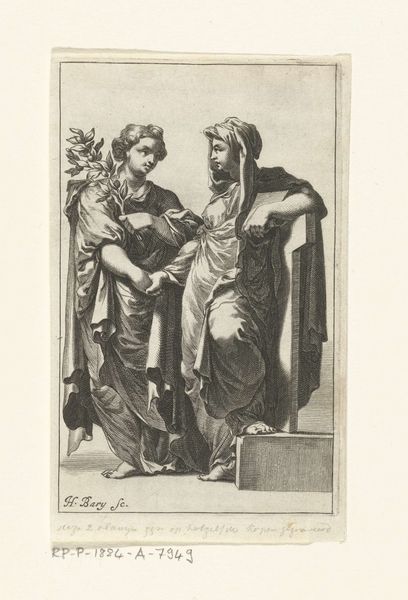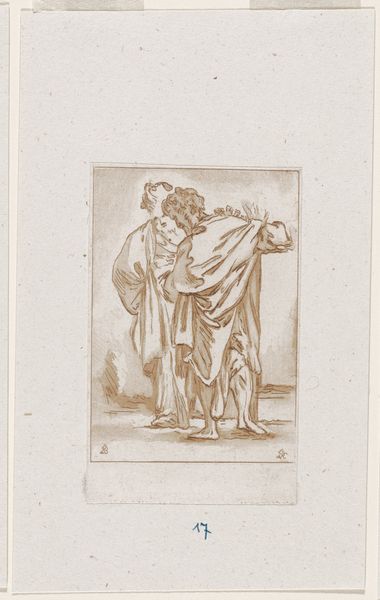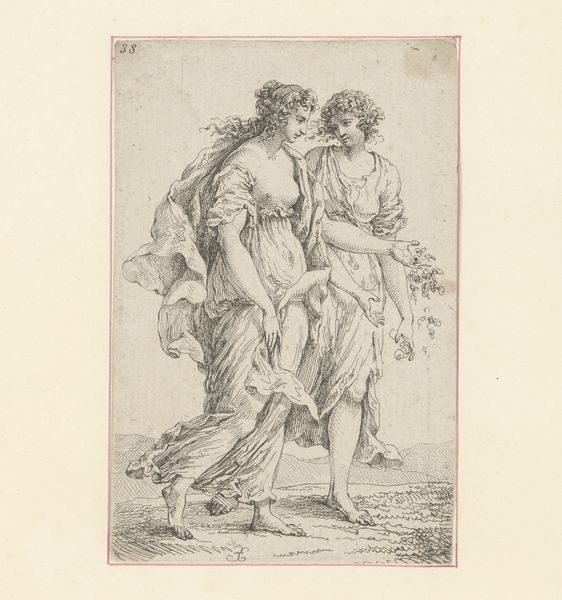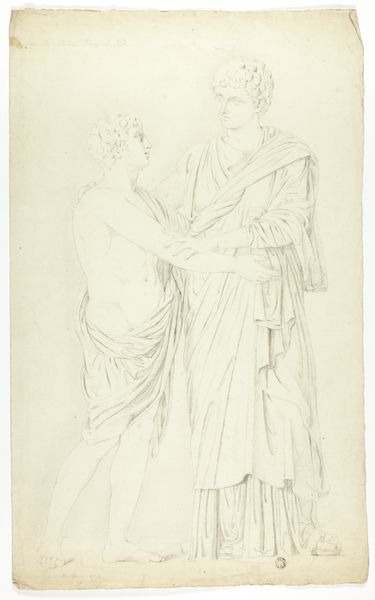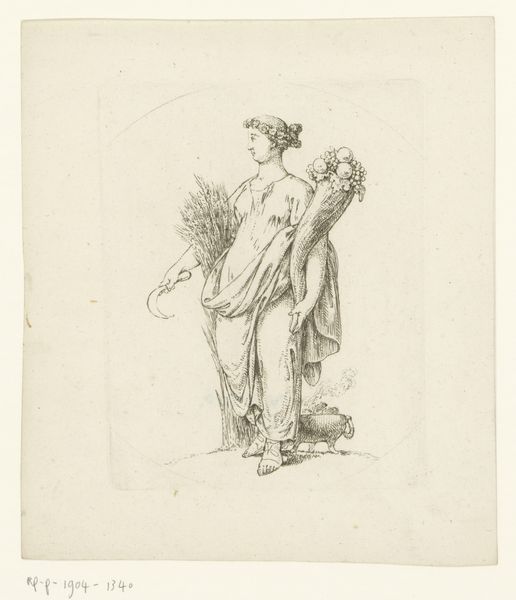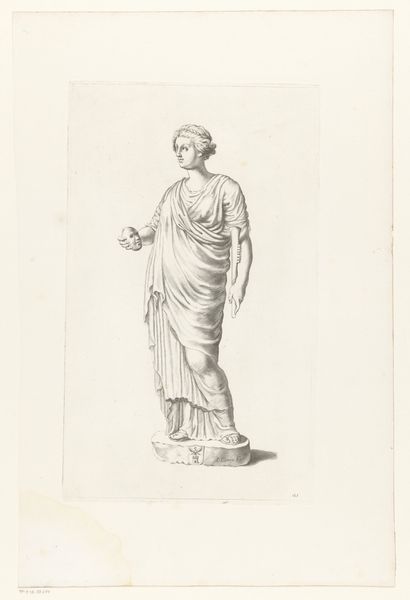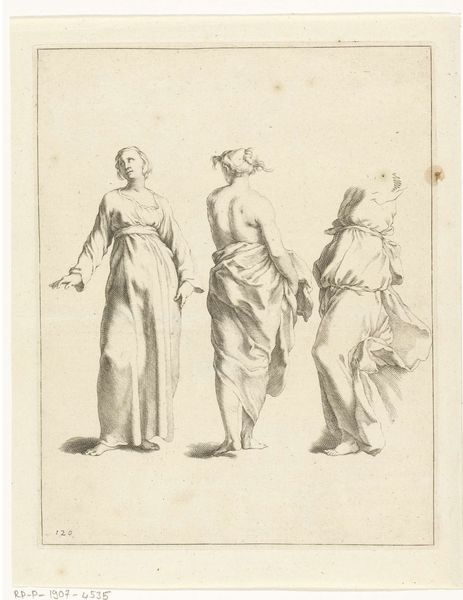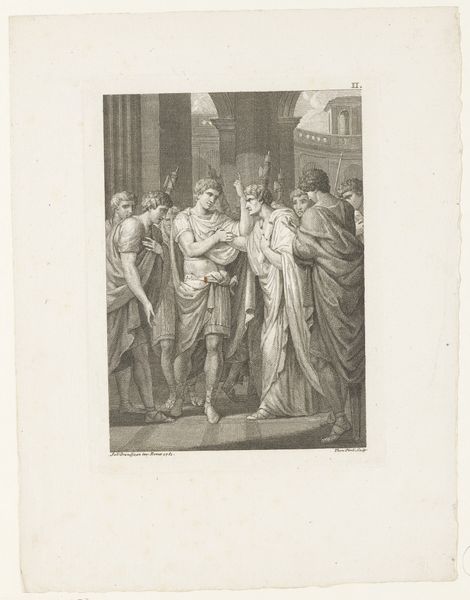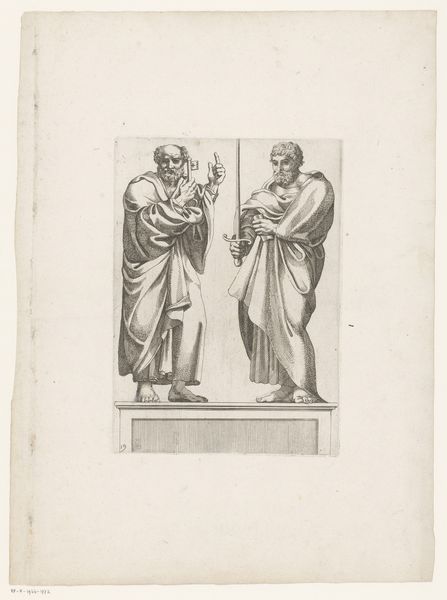
print, etching
#
portrait
#
baroque
# print
#
etching
#
figuration
#
history-painting
Dimensions: height 152 mm, width 100 mm
Copyright: Rijks Museum: Open Domain
Curator: Here we have "Two Standing Women in Antique Costume," an etching by Claude Mellan, likely created sometime between 1608 and 1688. What's your immediate take on this work? Editor: I’m struck by its linear quality. The lines create depth and volume with what appears to be, at first glance, minimal cross-hatching. There's an austere elegance to the whole composition. Curator: It’s fascinating how Mellan captures a sense of the classical through line alone. Consider the role of costume. These figures aren't just women; they're consciously presented as embodiments of antiquity. How do you see that choice functioning? Editor: Well, the drapery immediately positions them. Notice how the folds cascade and gather, guiding the eye. Each line contributes to a play of light and shadow, creating an almost sculptural feel. This careful arrangement underscores the classical ideal. Curator: Exactly. But it also begs questions about how this ideal is being constructed and perhaps even idealized by a male artist looking back at classical sources. The figures are serene but static, and it's tempting to wonder about their roles and relationships in the larger power dynamics of their imagined world, but also those of 17th-century Europe. Is there an implied narrative here? Editor: The suggestion of a narrative is subtle. The woman on the right directs her gaze, and raises her finger. One might consider this a conversation but Mellan allows us to construct it based on compositional elements: posture, placement, the way the fabric hangs… Curator: I'm thinking about the absence of explicit narrative detail as itself a commentary. Are we invited to project our own ideas about femininity and power onto these archetypes? And whose ideas are privileged in that process? These questions might bring a new understanding to the artwork’s message and the power dynamics it may inadvertently reflect. Editor: Yes, absolutely. These women serve as vehicles for aesthetic and perhaps even philosophical exploration. Mellan provides the framework and encourages the viewer to step into that construction and provide new ideas based on personal and community-wide historical evolutions. Curator: Thank you. That reframes the etching for me in new and interesting ways. Editor: Thank you. The closer look helps in really beginning to notice Mellan's visual language.
Comments
No comments
Be the first to comment and join the conversation on the ultimate creative platform.

